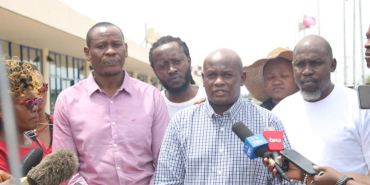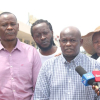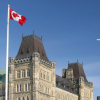Nairobi Demonstrations Paralyse CBD as Citizens Rally for Justice

Protests ignited by the death of teacher Albert Ojwang while in police custody escalated into a national security crisis yesterday, paralysing the city's central business district and disrupting parliamentary proceedings, including the national budget reading.
The demonstrations, initially focused on demanding justice for Ojwang's death, quickly devolved into violent clashes between protesters and law enforcement. The timing of the protests coincided with the second round of parliamentary hearings where security chiefs were summoned to address the circumstances surrounding Ojwang's death, amplifying public frustration with the government's response.
The protests, erupting nearly a year after mass demonstrations forced the withdrawal of the controversial Finance Bill 2025, suggest a growing public willingness to challenge the government directly, particularly regarding perceived injustices. The day began with a tense calm that dissolved by noon as demonstrators started gathering along Haile Selassie Avenue.
As the crowds grew, police moved to block access to government offices. By 12:30 p.m., a large group attempted to march toward the National Treasury building, intending to obstruct Cabinet Secretary John Mbadi's departure for Parliament. Security forces responded with tear gas in an attempt to disperse the marchers. However, protesters regrouped along major roads, their numbers increasing.
At 1:30 p.m., Mbadi, accompanied by a music band and his entourage, left the Treasury for Parliament amidst the escalating chaos. Television broadcasts showed Mbadi walking calmly while the city was gripped by volatile clashes between demonstrators and riot police.
By 2 p.m., protesters directed their focus toward Jogoo House, the headquarters of police authority, demanding the resignation of Deputy Inspector-General of Police Eliud Lagat, who is widely regarded as a central figure in the handling of police brutality cases. The confrontation intensified as tear gas filled the streets, sirens blared, and protesters hurled stones.
Elsewhere, attempts to storm Parliament were met with forceful resistance. Protesters barricaded Kenyatta Avenue by dismantling sidewalks and using bricks to block the roads. Near Kenya Cinema, two vehicles, a Wells Fargo Toyota station wagon and a privately owned car, were set ablaze. Businesses shuttered, and commuters struggled to navigate the turmoil.
Authorities reported deploying tear gas and water cannons, but video footage circulating online depicted bloodied civilians, injuries, and widespread chaos. One injured demonstrator, Lucy Nelima, claimed she was struck by a projectile near Harambee Avenue at 1:30 p.m.
As the budget reading proceeded in Parliament, protesters emphasised their demand for justice, viewing fiscal policy discussions as secondary. They questioned the allocation of funds to a police force accused of violence. Protesters moved through key streets, including Koinange, Kaunda, and Parliament Road, facing intensified police resistance. Tear gas was deployed repeatedly, dispersing the crowd. As protesters retreated toward City Hall Way, some sang the national anthem.
By late afternoon, police launched an offensive, overwhelming demonstrators with tear gas. Sporadic protests continued into the evening, with chants evolving into a new refrain: "No justice, no budget, no peace." As rush hour approached, Nairobi's transportation system ground to a halt. Buses stood idle, matatus disappeared, and commuters faced the choice of braving the chaos or walking long distances. Transport hubs at Kencom, Railways, and Commercial were deserted. Residents feared further unrest as night approached.








Add new comment